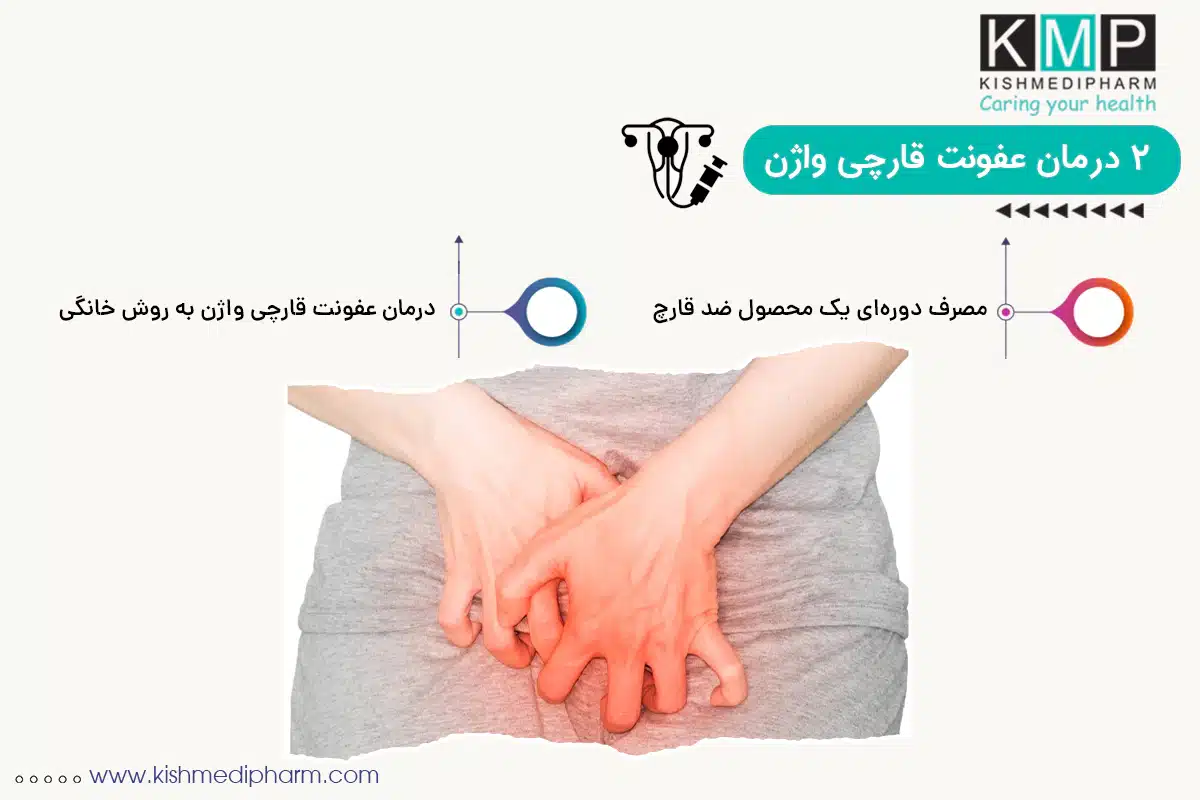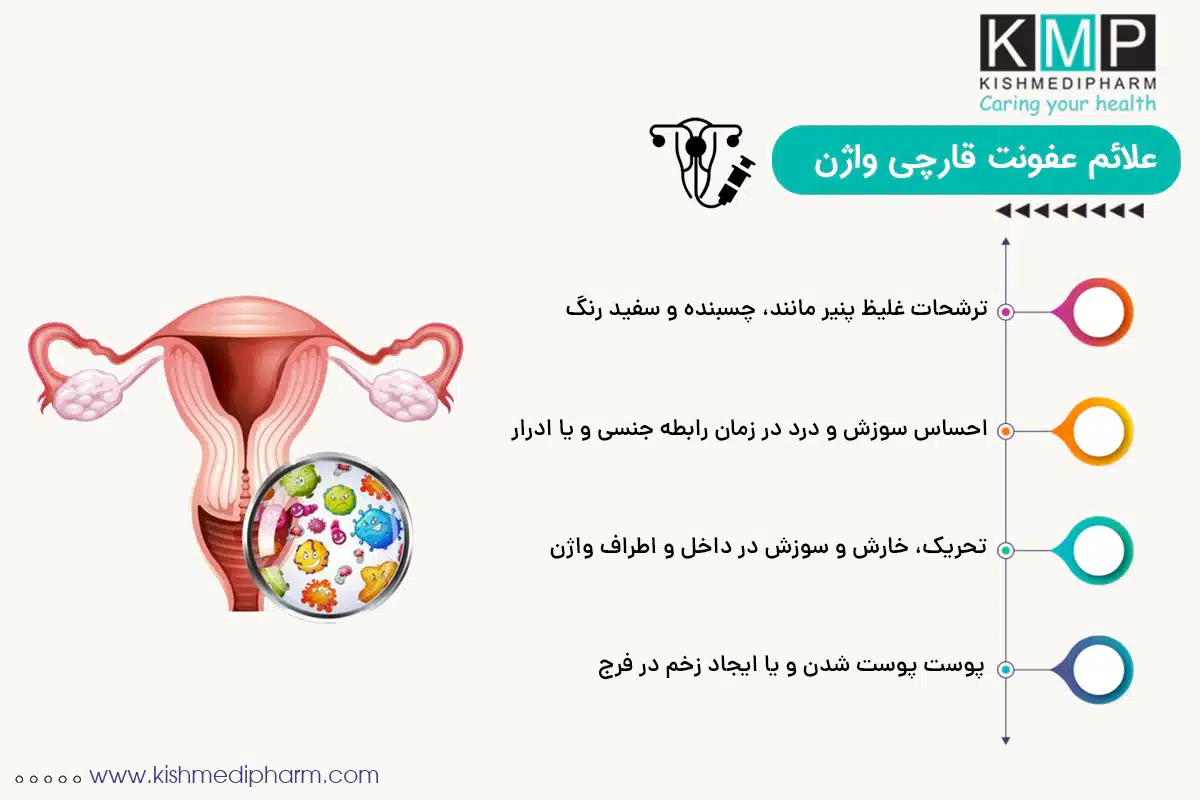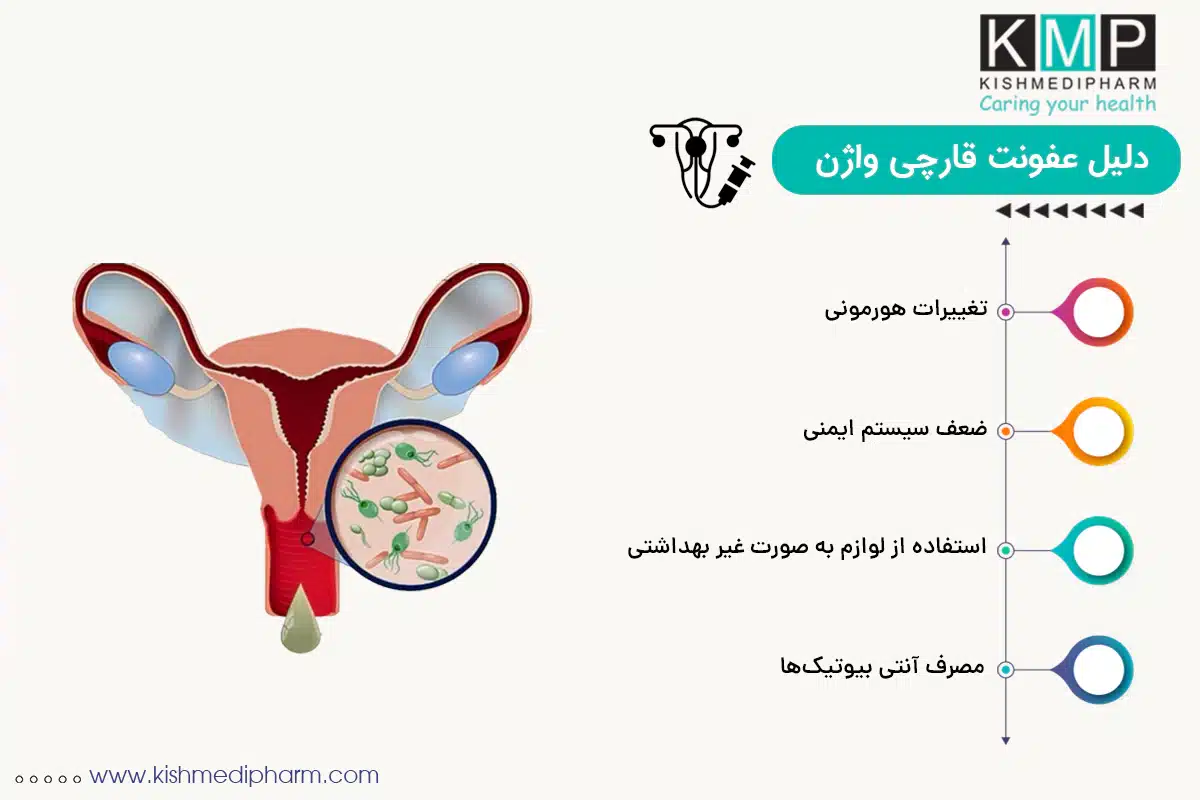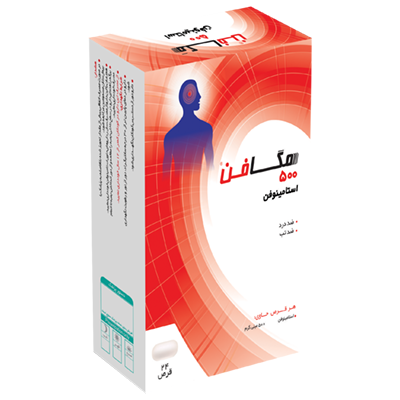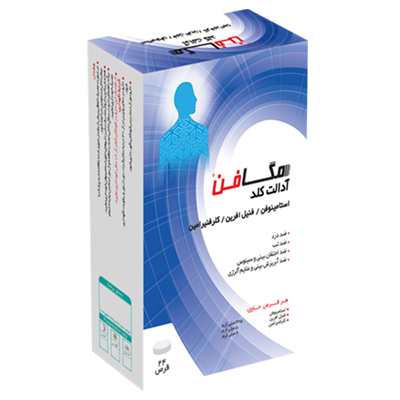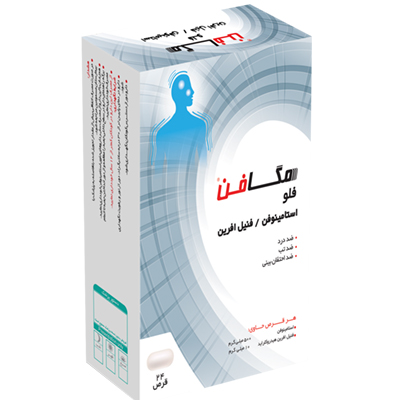Among the problems that a woman may experience repeatedly throughout her life is vaginal yeast infection, vaginitis, or vaginal candidiasis. These conditions usually occur during pregnancy, a weakened immune system, or the use of antibiotics, as this bacteria multiplies more at this time and causes this condition.
The vagina is a very sensitive environment that must always be kept clean. If this problem occurs, the cause of the vaginal yeast infection must be diagnosed immediately and treatment options must be planned.
Types of vaginal yeast infections include candidiasis, trichomoniasis, and Gardnerella. Each of these types can have different symptoms.
Usually, to treat vaginal yeast infection, experts recommend drug treatments based on your conditions. These conditions can include age, marital status, level of infection, or treatment of sexual partners. Below, we will explain in detail the symptoms and causes of vaginal yeast infection and introduce very effective solutions to get rid of vaginal yeast infection.
Symptoms and causes of vaginal yeast infection
Vaginal yeast infection is a relatively common occurrence in women. Although its diagnosis requires a visit to a specialist, if you experience any of the following symptoms, you probably have a vaginal yeast infection:
- Thick, cheesy, sticky, grayish-white discharge
- Burning and pain during sex or urination
- Irritation, itching, and burning in and around the vagina
- Peeling or sores in the vulva
- Swelling and redness around the vulva and vagina
- Having a fishy odor in the vaginal area
- Red rash and inflammation of the vagina
Some women may experience one or more of the above conditions, in which case they should immediately treat the vaginal yeast infection to prevent unwanted complications and irreparable problems.
Identifying the cause of a vaginal yeast infection is not an easy task, as it can be caused by one or more factors. The symptoms may even have a cause other than a yeast infection.
If you are planning to become pregnant or are pregnant, you are at a very sensitive point in your life and that of your child. Please note that during this period, the occurrence of such problems can not only pose a danger to you, but also cause irreparable harm to the fetus.
Knowing the cause of vaginal yeast infection can help you prevent this problem from occurring in your life. Here we have discussed some of the types and causes of vaginal yeast infection:
- Hormonal changes: There are times in a person's life when hormonal changes occur, which can lead to changes in the amount of yeast in the vagina. Periods such as menopause, pregnancy, and menstruation are among these times, and they can be a type of cause of vaginal yeast infections.
- Weak immune system: People with HIV and other diseases that weaken the immune system are more likely to develop vaginal yeast infections. It is worth noting that lack of sleep, poor diet, and excessive stress can also weaken the immune system.
- Unhygienic use of equipment: Using large pads prevents enough air from reaching the vagina and can lead to the growth of yeast. Change your pads frequently during your period and use pads of your size.
- Taking antibiotics: If you have been taking antibiotics, you should know that you are more susceptible to yeast infections. Antibiotics kill not only harmful bacteria, but also bacteria that are naturally present in the body. The lack of beneficial bacteria in the vagina is another reason for vaginal yeast infections. If you are using antibiotics a lot, it is better not to forget to consume probiotics (probiotic yogurt).
- Using public toilets: Since these places are usually crowded with more people, there is a greater chance of bacteria, infections, and viruses being transmitted. Do not touch the toilet faucets to your body in any way.
- Sexual partner with infection: One of the most common causes of vaginal yeast infections is having an unprotected sex partner. If your sexual partner has this problem, it is possible that the infection and fungus will be transmitted to you as well.
- Diabetes: Excess sugar in the urine affects the growth of various microbes and fungi. Uncontrolled diabetes is another cause.
You should never ignore a vaginal yeast infection because it can lead to complications such as HIV infection, infertility, miscarriage, irreversible fetal problems, and pelvic inflammatory disease. Treatment for vaginal yeast infection should begin as soon as any of the above symptoms are observed.
You have certainly heard that prevention is better than cure, so it is very important to follow hygiene tips in this case too. In many cases, the cause of yeast infection is lack of attention to hygiene and cleanliness, so before you think about treating vaginal yeast infection, it is better to prevent the cause of vaginal yeast infection. Here we have mentioned a few simple tips that will prevent this dangerous problem from occurring:
- Rinse your vagina well with lukewarm water after using the bathroom and make sure it is completely clean.
- Be sure to dry your vagina thoroughly after douching, as fungi spread and grow more easily in a moist environment.
- Avoid wearing tight, clingy underwear and clingy pantyhose. It is better to buy and use cotton or silk panties for everyday use.
- Having controlled sex and using condoms prevents the transmission of vaginal yeast infections.
- Using vaginal douches, vaginal sprays and perfumes, and strong soaps can be another type of cause of vaginal yeast infection.
Having unsafe sex is one of the causes of vaginal yeast infection. It is not always easy to treat vaginal yeast infection, so it is better to prevent it by following hygiene tips.
2 Treatment of vaginal yeast infection
You may also be interested in the fact that fungal infections can be treated in various ways. Below, we have mentioned and reviewed some of the methods for getting rid of fungal infections:
- Periodic use of an antifungal product: Your doctor may recommend a topical antifungal medication for vaginal yeast infection after an initial examination and evaluation. The most common topical antifungals include clotrimazole, clobetasol, terconazole, buticonazole, miconazole, seconazole, econazole, cloxacillin, and econazole. Vaginal yeast infection medications are available in creams, ointments, tablets, and suppositories.
- One of the products of Kish Medipharm Pharmaceutical Company is clotrimazole. This pharmaceutical product, which treats vaginal yeast infections, is formulated as a topical cream, vaginal cream, and topical solution in doses of 1 and 2 percent.
- Home treatment for vaginal yeast infection: Although home remedies do not replace chemical treatments, they are always welcomed by many people as adjunctive treatments. For example, diluted coconut oil and tea tree oil can help you. Just remember to do an allergy test before using any topical product, even if you have prepared it yourself. (Due to the sensitivity of this method and the possibility of recurrence of the disease if the oils and other materials are microbial, this type of treatment is not approved by experts). The allergy test is to apply the prepared materials to a small area of the skin of the hand. If it does not cause inflammation and redness, it means that you are fortunately not allergic to these materials.
Clotrimazole Kish Medipharm, the way to get rid of vaginal yeast infection
Clotrimazole By inhibiting the biosynthesis of triglycerides and phospholipids, as well as preventing the activity of the peroxidase enzyme, and subsequently increasing the toxic concentration of hydrogen peroxide, it prevents the formation of cell walls and inhibits the growth and cell division of the fungus.
One of the different types of vaginal yeast infection medication is Clotrimazole Kish Medipharm. This product, with its advantages, is considered one of the first choices for treating vaginal yeast infection. Although this medication can be purchased with a doctor's prescription in pharmacies across the country, remember that it is only suitable for treating mild to moderate vaginal yeast infection.
Kish Medipharm Clotrimazole Ointment has many benefits and is formulated to treat vaginal yeast infections. Below we have summarized some of these features:
- Easy access
- Easy and topical use
- Very good effectiveness (considering it is topical)
- Affordable and cheap price
- Inhibiting the growth and proliferation of harmful fungi (antifungal property)
- Fewer side effects than other treatments
Wash your hands thoroughly before using Clotrimazole Ointment and be careful not to let this product come into contact with mucous membranes, including the eyes, mouth, and nose. Clotrimazole Ointment is recommended for pregnant women as a vaginal yeast infection medication only with a doctor's prescription. This medication is in pregnancy category B and there are not enough studies to determine whether it is excreted in breast milk. However, follow your doctor's advice during this period.
Before using Clotrimazole ointment, do a sensitivity test and if you are sure that this product is suitable for treating your vaginal yeast infection, apply it topically to the vaginal area as recommended by your doctor and the brochure inside the box. This product is produced in 20 and 50 gram tubes with an applicator. Clotrimazole ointment should be stored at a temperature below 30 degrees Celsius and away from sunlight.
The course of treatment for vaginal yeast infection with Clotrimazole Kish Medipharm ointment is usually 7 to 10 days, but again it depends on the diagnosis of your doctor. To use, attach the applicator to the opening of the tube and fill it with the material, lie completely on your back and empty the material inside the applicator into the vagina as much as possible. This medicine is not recommended for people who are allergic to Clotrimazole and girls under 12 years of age.
Topical use of Clotrimazole Kish Medipharm is considered one of the best treatments for vaginal yeast infections.
Seeing a doctor after taking vaginal yeast infection medication
If you develop a vaginal yeast infection again after a short period of time, you should definitely see a specialist. Also, if you do not improve after taking vaginal yeast infection medication, be sure to take another approach as recommended by your doctor. In rare cases, you may experience the following after taking vaginal yeast infection medication, in which case you should definitely go to the emergency room and see a doctor.
- Feeling dizzy or lightheaded
- Shortness of breath and difficulty breathing
- Symptoms become more acute and severe
- Discharge of unusual colors or blood-tinged material
- Inflammation and sensitivity in the lips, face, hands, and throat
Sometimes people self-medicate and may not have a fungal infection at all. Therefore, it is best to be sure that you have this condition before taking medication for a fungal infection.
Conclusion
Three out of four women will develop a vaginal yeast infection during their lifetime. Vaginal yeast infections can be caused by things like uncontrolled diabetes, hormonal changes, poor hygiene, taking antibiotics, having a sexual partner who is carrying the fungus, and a weakened immune system.
Although home and traditional treatments are not a surefire solution, they can be used as a complementary treatment alongside medication. One type of treatment for vaginal yeast infection is the use of topical antifungal products such as clotrimazole and clobetasol.
Remember, the above is not a substitute for the advice and prescription of your specialist doctor, and diagnosing the cause of a vaginal yeast infection is sometimes not as easy as it seems. Therefore, to get rid of a vaginal yeast infection, you should explain all your conditions to your doctor and provide him with a complete list of the symptoms that you have been experiencing.

